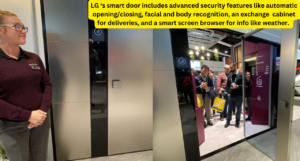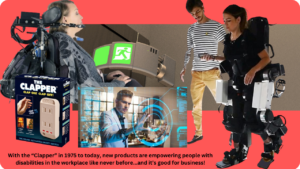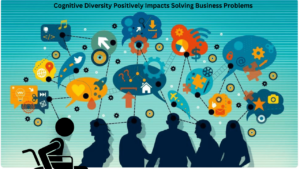In today’s world, inclusivity is gaining momentum, with increasing attention given to diverse groups such as people of color and those of different sexual orientations. However, one group that often remains overlooked is people with disabilities. Surprisingly, employment of persons with disabilities has stood at a record high of 35% since statistics were first recorded—about half of the employment rate for people without disabilities.1
There exists a misconception that hiring individuals with disabilities can be burdensome for employers (NCD.gov). 2 This perception not only hinders employment opportunities for people with disabilities but also deprives businesses of the unique advantages they bring to the table. Here’s why integrating skilled employees with disabilities and AI-powered solutions into routine business processes can enhance productivity and profitability for the whole organization.
Creating an Accessible Work Environment
The first step towards inclusivity is fostering an open attitude towards change. Making an office accessible benefits not only employees with disabilities but everyone within the workspace. For instance, installing ramps not only aids those using wheelchairs but also facilitates more effortless movement for everyone, including clients. An uncluttered space with clear pathways ensures that wheelchair users can maneuver without difficulty, creating a safer and more efficient environment for all employees.
Consider the example of doors. Automatic doors are a simple yet effective solution for employees who use wheelchairs. Automatic upgrades, costing around $700, significantly enhance accessibility and save energy. Similar retrofits for curtains and blinds exist, which can be preprogrammed to open and close on multiple schedules, impacting energy management, automating sunlight management, and enhancing security[3] and privacy.
 Figure 1.
Figure 1.
Implementing Ergonomic Interfaces
Human factors engineering led to many contemporary interfaces that recognize, authenticate, and grant access to physical locations and digital applications, including:
- tactical finger and palm prints;
- retinal (eye) and olfactory (smell) biometrics[4];
- facial patterns;
- spatial torso and peripheral gestures;
- eye-tracking sensors;
- and sound, including voice recognition.
 Figure 2.
Figure 2.
Remember the “Clapper(R)”? In recent years, gaming innovations and artificial intelligence[1] have enhanced and improved these interfaces, enabling everyone, especially people with disabilities, alternatives to conventional mouse and keyboard technologies.
For example, organizations have been replacing doorknobs with handles for decades as a cost-effective measure, allowing easier access for those with limited grip strength. Today, handles, door frames, and side panels can be equipped with smart[9] locks that can be activated by a keypad, radio frequency card, or any human interface[5] device (HID).
Electromechanical desks can be adjusted on-demand or on a preprogrammed schedule[6]. At the same time, ergonomic chairs offer features like autonomous drives and front and rearview cameras. They can be outfitted with complex torso and peripheral supports that have come to market since 2018. From smart keypad locks to adjustable furnishings, HIDs enhanced by artificial intelligence offer additional adaptations that promote inclusivity and comfort.
Leveraging Assistive Technology Is Good for Business
Implementing assistive technology is another pivotal strategy for enhancing productivity in the workplace. Tools such as screen readers, voice recognition software, ergonomic keyboards, and even smart glasses for the visually impaired enable employees with visual, hearing, or mobility impairments to perform tasks effectively. Training sessions to educate staff on proper etiquette when interacting with colleagues who have disabilities can further create a supportive and understanding work environment.
Leveraging assistive technology is good for business beyond productivity measures and comfort factors. Here are three:
a. Expanding the Talent Pool
Excluding people with disabilities from the workforce restricts the talent pool. Many individuals with disabilities possess unique skills and perspectives developed through their life experiences. These experiences often cultivate resilience, adaptability, and innovative problem-solving abilities. Employers who recognize and harness these attributes[7] can gain a competitive edge. 3
For example, an employee with a visual impairment might develop exceptional listening and memory skills. Such abilities can be valuable in roles requiring keen attention to detail. Moreover, people with disabilities often demonstratea high commitment and loyalty, leading to reduced turnover rates and decreased costs associated with hiring and training new staff.
b. Enhancing Company Morale and Innovation through Cognitive Diversity
Inclusive hiring practices not only boost the morale of employees with disabilities but also positively impact the entire workforce. When employees see their company making efforts to include and support colleagues with disabilities, it fosters a culture of loyalty and inclusivity. This inclusive environment can stimulate creativity and innovation as diverse perspectives lead to unique solutions and ideas. By comparison, a pair of UK-based scholar-practitioners found no correlation between gender, ethnicity, and age diversity and the problem-solving performance of executive teams, bucking conventional wisdom. This finding led them to consider cognitive diversity.
In their article published in the Harvard Business Review, Reynolds and Lewis note, ” Cognitive diversity has been defined as differences in perspective or information[2] processing styles. It is not predicted by factors such as gender, ethnicity, or age. Here, we are interested in a specific aspect of cognitive diversity: how individuals think about and engage with new, uncertain, and complex situations.” 3
 Figure 3.
Figure 3.
The authors observe that organizational functional bias arises from low cognitive diversity, an outcome of the all-too-common saying, “We recruit In our image.” They summarize the impact of low cognitive diversity as twofold: (i) it attenuates contributions from people who think differently, and (ii) it reduces the impact of the initiatives by fully representing the cognitive diversity of an organization’s workforce.
For instance, consider a team brainstorming session where an employee with a disability contributes a novel approach to a problem based on their distinct life experiences. Such contributions can drive the development of new products or services, benefiting the company’s growth and profitability and overcoming functional bias.
c. Improving Public Image and Compliance
Hiring employees with disabilities can enhance a company’s public image. Consumers are increasingly drawn to socially responsible businesses, and demonstrating a commitment to inclusivity can strengthen customer loyalty and attract new clients.
Additionally, employing people with disabilities helps companies comply with legal requirements, reducing the risk[10] of fines and penalties. Many regions also offer tax benefits to companies that hire individuals with disabilities, such as tax credits for making workplace accommodations or hiring individuals from certain underrepresented groups, providing further financial incentives. For a detailed understanding of the tax benefits and legal requirements in your region, consult your local labor laws or a legal advisor. 4
For an in-depth comparison of disability-related laws worldwide, see the Hammill Institute on Disabilities report on non-discrimination protections and reasonable accommodation across all 193 UN member states.5
Conclusion
Incorporating employees with disabilities into the workforce is a strategic business decision. By creating an accessible work environment, leveraging assistive technology, expanding the talent pool, enhancing company morale, and improving public image, businesses can unlock a wealth of potential that drives productivity and profitability. Embracing inclusivity and cognitive diversity is a win-win situation, benefiting the workforce and their employers and paving the way for a more equitable and prosperous future.
ENDNOTES
1 Diane M. Winiarski, C. R. C. (2023, February 21). The job market for people with disabilities is booming. Kiplinger.com. https://www.kiplinger.com/personal-finance/job-market-for-people-with-disabilities-is-booming
2 National Council on Disability: 2023 progress report: Toward economic security: The impact of income and asset limits on people with disabilities. National Council on Disability | 2023 Progress Report: Toward Economic Security: The Impact of Income and Asset Limits on People with Disabilities. (n.d.). https://www.ncd.gov/report/2023-progress-report-toward-economic-security-the-impact-of-income-and-asset-limits-on-people-with-disabilities/
3 Teams solve problems faster when they’re more cognitively diverse. Harvard Business Review. (2021, August 27). https://hbr.org/2017/03/teams-solve-problems-faster-when-theyre-more-cognitively-diverse
4 U.S. Bureau of Labor Statistics. (n.d.). America’s recovery[8]: Labor market characteristics of people with a disability. U.S. Bureau of Labor Statistics. https://www.bls.gov/spotlight/2021/labor-market-characteristics-of-people-with-a-disability/
5 A Comparative Overview of Disability Related Employment Laws and Policies in 193 Countries, Hamill Institute on Disabilities, Jody Heymann, MD, PhD, Elizabeth Wong, MPH, and Willetta Waisath, MPH, https://disabilityinclusiveemployment.org/wp-content/uploads/2021/05/heyman-2021.pdf
The simulation of human intelligence processes by machines, especially computer systems. These processes include learning (the acquisition of information and rules for using the information), reasoning (using rules to reach approximate or definite conclusions) and self-correction. The simulation of human intelligence in machines that enables them to perform tasks such as learning, reasoning, and problem-solving.
The by-product of having data in an HR System. Data is gathered and reviewed providing information for decision making.
The protection of information assets through the use of technology, processes, and training.
The measurement and analysis of unique physical or behavioral characteristics, such as fingerprints or voice patterns, for identification and authentication purposes.
A program used to provide an automated link between the HRMS and other programs or third party entities that require use of the data for various processes (general ledger interface, payroll system interface, medical insurance, 401k administration, etc.). Internal interfaces connect systems and entities within the company (departments, buildings, plants, other functional systems). External Interfaces connect the system with outside entities (banks, health care providers, vendors, customers). A description of what a component does to communicate with another component using an established communication mechanism. The details are usually published externally so that developers know what is needed in order to achieve a connection.



